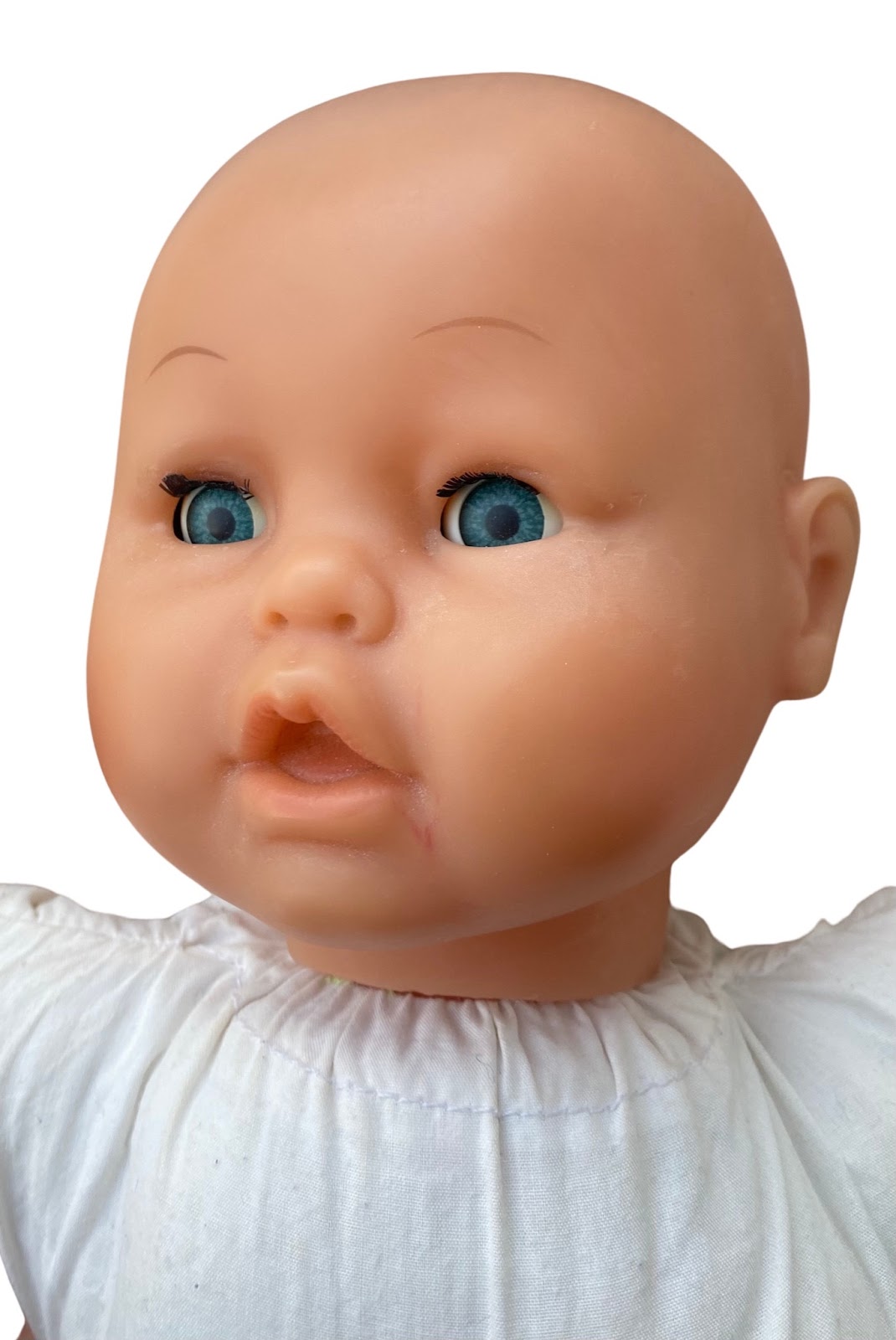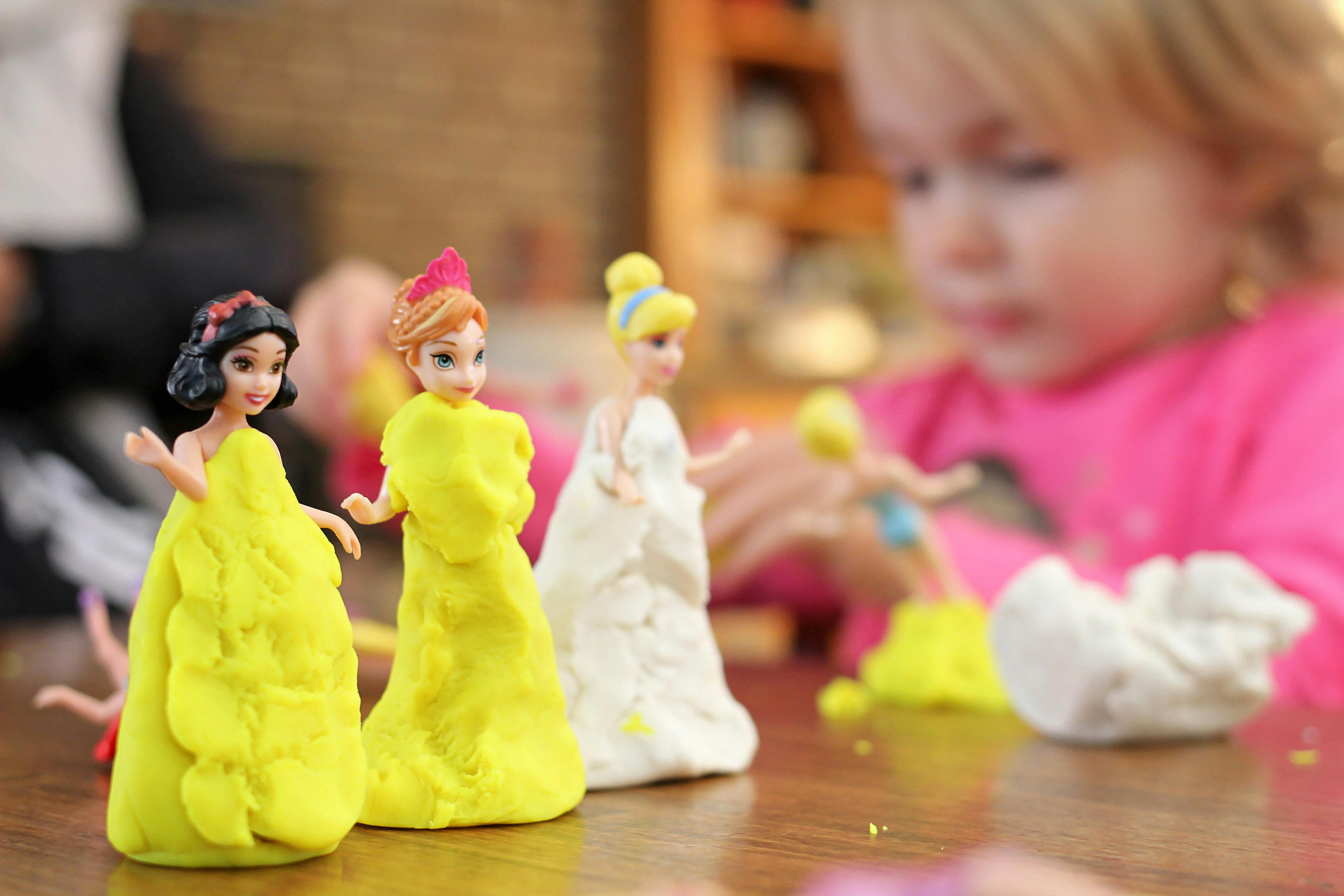
Most of the dolls in the western countries show extreme beauty standard for female dolls. They often represent a westernized and white representation of dolls ( Byrd et. al, 2017).The appearance of dolls fosters an extreme beauty standard (big lips,big blue eyes, long & artificial lashes) for a baby ( Byrd et. al, 2017). It encourages a poor representation for women already telling little girls how they should look, mostly directed towards girls. Furthermore, it sets unrealistic beauty standards for toddlers/children and subconsciously puts them under pressure to fit into a certain role (Gaudio, 2011).

Close up picture of the 3D model. Source: This picture was taken by Nina during the selection proccess of our toy
The subtle influence on little children comes with a big outcome (Pedersen & Markee, 1991). Not only the face but also the way the body of the doll is presented,has a huge impact on how children feel about themselves.
In a study (Boothroyd et al., 2021), children were divided into two groups. One group played with dolls who had a childlike almost realistic body and the other group played with dolls, who were unrealistically thin. They measured the girl’s perceptions and ideals before the experiment. The findings of this study showed that the children who played with the thin dolls, showed that their ideal self looked thinner after playing with the thinner dolls. The children who played with the childlike and normal body type dolls showed no difference to before( Boothroyd et al., 2021).
This shows the significance of presenting children a healthy and realistic ideal in order to develop a healthy mindset towards their body.

Child playing with princess dolls. (Pexels, 2024)